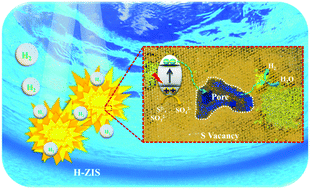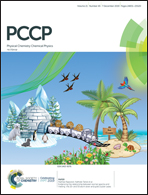Hydrogenated ZnIn2S4 microspheres: boosting photocatalytic hydrogen evolution by sulfur vacancy engineering and mechanism insight†
Abstract
In some oxide photocatalysts, changing their surface structure rather than crystal structure by introducing some defects (such as oxygen vacancies) has been proven to be effective in enhancing the separation efficiency of photogenerated carriers and thus photocatalytic activity. To the best of our knowledge, however, such a surface defect engineering strategy for sulfide photocatalysts has rarely been verified. The present work shows the first case of employing pressure hydrogenation to prepare hydrogenated ZnIn2S4 (H-ZIS) microspheres with surface-deficient porous structures, which are favorable for furnishing sufficient surface sulfur vacancies to realize excellent photocatalytic hydrogen evolution reactions. The hydrogen evolution rate (HER) of H-ZIS is as high as 1.9 mmol h−1 g−1 (nearly 8.6 times that of the pristine ZIS sample), which rivals or exceeds those of previously-reported ZIS-based photocatalysts under visible light irradiation. Meanwhile, the inherent correlation between surface sulfur vacancies and photocatalytic activities of H-ZIS is also explored. Thus, this work demonstrates the feasibility of enhancing the hydrogen evolution capability of sulfide photocatalysts by the formation of sulfur vacancies through a pressure hydrogenation process.



 Please wait while we load your content...
Please wait while we load your content...